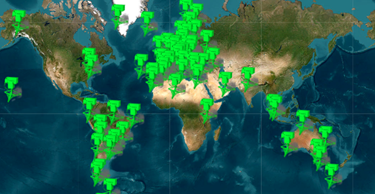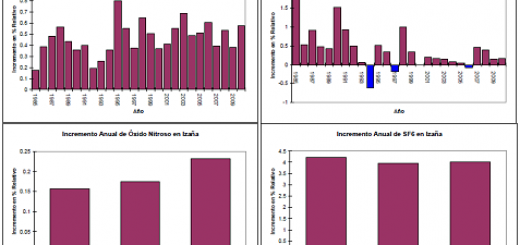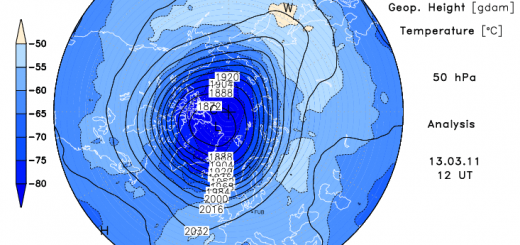ACE20 Workshop: Future North Atlantic Atmospheric Observation Systems. Assessing the legacy of ACE2

The workshop entitled “ACE20: Future North Atlantic Atmospheric Observation Systems. A Assessing the legacy of ACE2” took place in the Hotel Mencey at Santa Cruz de Tenerife (The Canary Islands, Spain) from 4 to 6 July 2017. The workshop was chaired by Dr. Frank McGovern (EPA), with the presence of the ACE2 (1997) project leader, Dr. Frank Raes, as well as leading specialists in atmospheric processes in the North Atlantic .
This workshop was organized in Tenerife to commemorate the 20th Anniversary of the celebration of the huge aerosol observation experiment on the North Atlantic called “The 2nd Aerosol Characterization Experiment (ACE-2)” (see Raes et al, 2000). A key objective for the 1997 ACE2 project was to increase understanding of the impacts of air pollutants on climate, focusing on the North Atlantic sub-tropical region. This was achieved by studying the properties, processes and effects of contrasting aerosol types in this region, including background marine and anthropogenic-pollution aerosols in the marine boundary layer (MBL), and background aerosols and mineral dust in the overlaying free troposphere (FT) (Raes et al., 2000). One of the accomplishments of ACE-2 was to provide a qualitative, and in many cases a quantitative understanding of the complex gas/aerosol/cloud system in the sub-tropical marine environment.
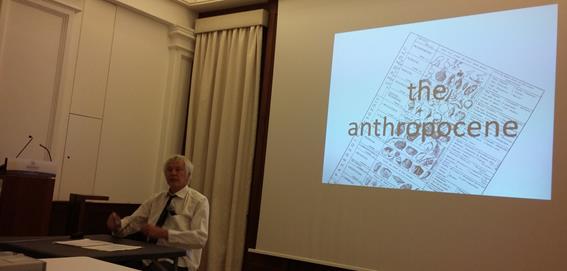
Frank Raes giving his special talk “The Anthropocene”
The 20 year anniversary of the ACE2 project was an opportune moment to examine the legacy of ACE2, review subsequent scientific and technical progress and consider current and emerging scientific and policy challenges in the North Atlantic Region and how they can be addressed, including options for further development of observing systems.
The main topics discussed were:
– Current questions and issues on atmospheric composition in the greater North Atlantic Region. It will include a review of ACE2 its objectives and achievements and subsequent progress made in aerosol sciences.
– Review of sites and networks: An overview of key atmospheric observation sites and networks over the North Atlantic.
– Integration and development questions and next steps.
The workshop was also an opportunity to exchange experiences between the different atmospheric stations operating in the North Atlantic, and to initiate an initiative to coordinate observation activities and programs, as well as the development of synergies.
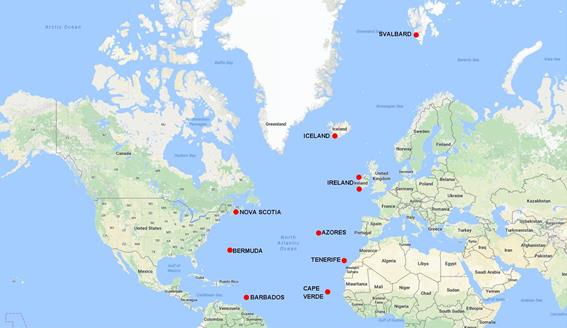
Map with the most important atmospheric stations deployed in the North Atlantic
The second day of the workshop (July 5th) included an afternoon visit to the Izaña Observatory and later to the Punta del Hidalgo lighthouse, where an important part of the ACE-2 observation capacity was installed in 1997.

Participants of the ACE20 workshop at the Izaña Observatory (July 5th, 2017)
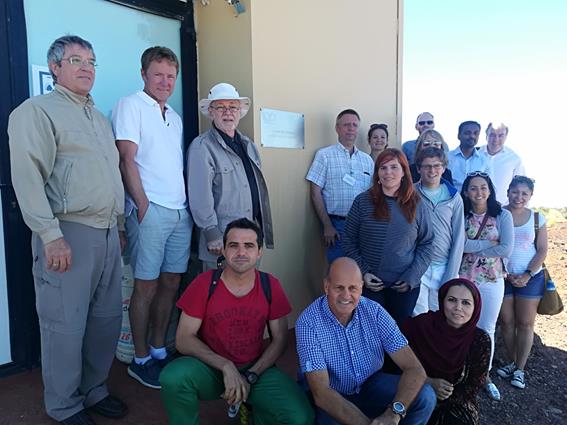
Participants of the ACE20 workshop at the door of the Aerosol Research Laboratory “Joseph M. Prospero”, with Prof. Prospero (standing, 3rd from the left) (July 5, 2017).
The Izaña Atmospheric Research Centre is very grateful to Frank McGovern for the organization and coordination of ACE20, and to Claire Camilleri (EPA) for her logistics work at the workshop.
References:
Raes, F., T. Bates, F. McGovern, and M. Van Liedekerke, The 2nd Aerosol Characterization Experiment (ACE-2): general overview and main results, Tellus, 52B, 141–168, 2000.

